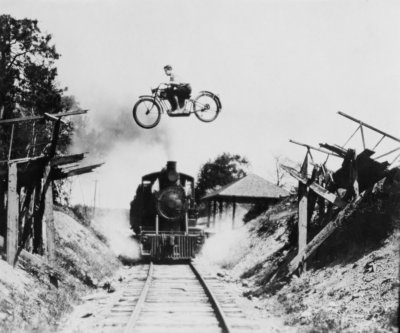Big miners playing game of chicken as marginal producers sink below break-even

FT.com quotes research from investment bank Macquarie as saying marginal producers of iron ore, zinc, thermal coal, ferrochrome, nickel and aluminium can’t turn a profit at today’s prices.
Smaller miners are waiting for production cutbacks by the market leaders to prop up prices the way Saudi-Arabia comes to the rescue of oil producing nations whenever the crude price begins to flag.
The paper argues it may be in the best interest of the likes of BHP Billiton, Rio Tinto and Vale to start playing a Saudi-like role as they “can exert a powerful influence on market sentiment […] simply by announcing their intentions,” but so far no-one has blinked:
In the platinum industry, all eyes are on Anglo American, the largest producer, which is undertaking a much-hyped strategic review.
In aluminium, rivals are waiting to see whether Rusal will follow through on its announcement that it was “considering” cutting 4-6 per cent of its capacity.
And the copper and potash industries are waiting to see which of BHP Billiton’s Olympic Dam (copper and uranium) or Jansen (potash) projects will be delayed as the world’s largest miner reins in its capital spending.
BHP Billiton, the world’s number one miner worth over $150 billion, has been making noises in this direction saying it will not spend the $80 billion previously set aside for expansion by 2015.
While the major metal and mineral prices have definitely come down from the highs hit in the 3rd quarter of last year – it is a pretty mixed picture across the industry.
Copper snapped a losing streak on Friday recovering from 4-month lows after Chile’s Codelco said its output fell 10% in the first quarter, even though the world number one producer of the red metal said its full-year production remains on target.
At $3.44 a pound the copper price is still 10% weaker than a month ago and the metal has also pulled backed more than 20% from historic highs hit at the end of July last year of a shade under $4.50 a pound (more than $10,000 a tonne). A 20% pullback is usually indicative of a bear market.
While supply remains constrained near term – and at current prices most copper producers are still making money – a slew of new mines are coming on stream next year and in 2014 which according to analysts at Wood Mackenzie translates into greater supply growth than in 1998–2011 put together.
That could drive prices closer to marginal costs which for copper producers are in the $6,000 – $7,000 a tonne range or roughly $2.75 – $3.15 a pound.
Iron ore has experienced an even more dramatic decline. Iron ore prices on Friday hovered near six-month lows as Chinese steelmakers demand cargo deferrals or simply default on shipments.
The import price of 62% iron ore fines at China’s Tianjin port was $130.50 at tonne on Friday, down more than 10% since the start of May. In the space of little over a month last October iron ore shed $60 a tonne from all time highs above $180.
Metallurgical coal has managed to stay above $200 a tonne this year. Heavy rains in Australia at the start of last year drove the price briefly to $300 a tonne, but historically $200 translates to robust reward for coking coal miners.
Western Canadian premium-grade hard coking coal to Asia declined from $235 per tonne to $211 at the Vancouver port in the current quarter according to Scotiabank data.
Unlike met coal, coal for power generation at the port of Newcastle in Australia, the benchmark for Asia, has taken a drubbing. At around $95 a tonne thermal coal is now trading at its lowest level since October 2010.
Potash which is set according to long term contracts have been steady around $500 a tonne for the better part of a year. The big three North American producers are selling to China at $470 a tonne, the same as the second half of last year although contracts above $500 a tonne have also been signed says Scotiabank.
Swings in the price of the soil nutrient have been wild in recent years – it ran up from $100 a tonne in 2004 to almost $900/tonne before the 2008 recession when the boom went bust and prices rapidly fell back to $350/tonne.
More News
{{ commodity.name }}
{{ post.title }}
{{ post.date }}

Comments